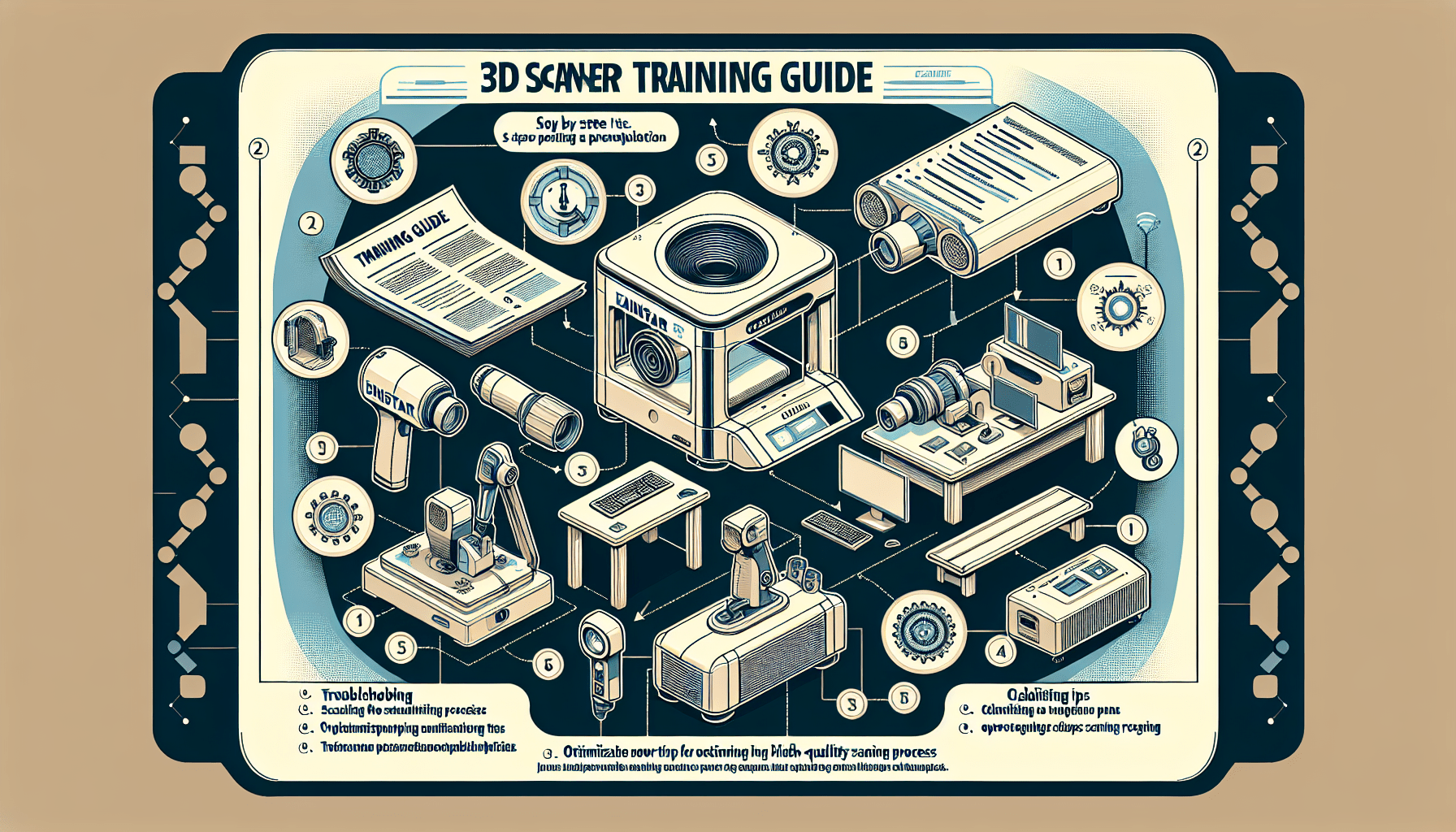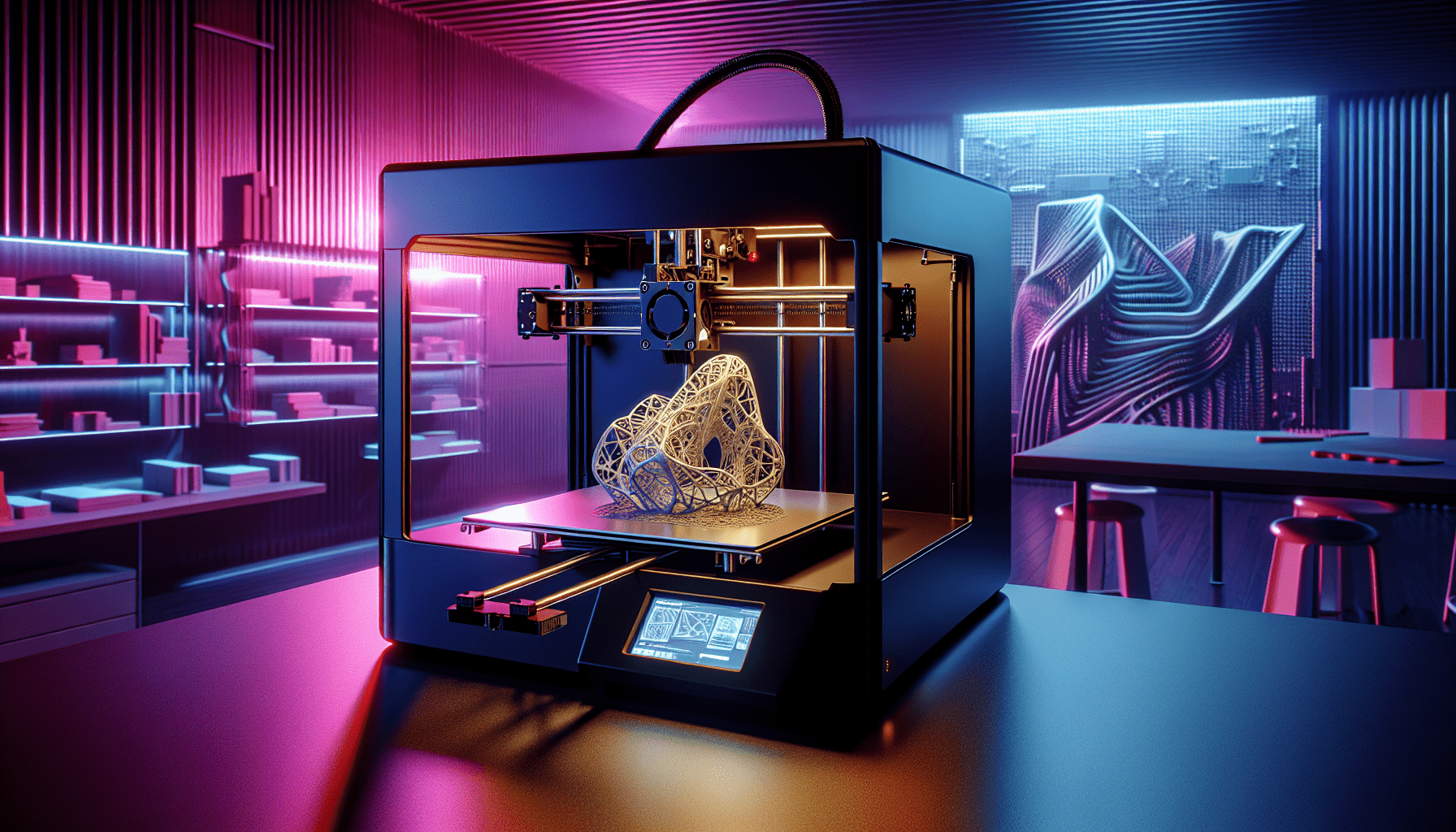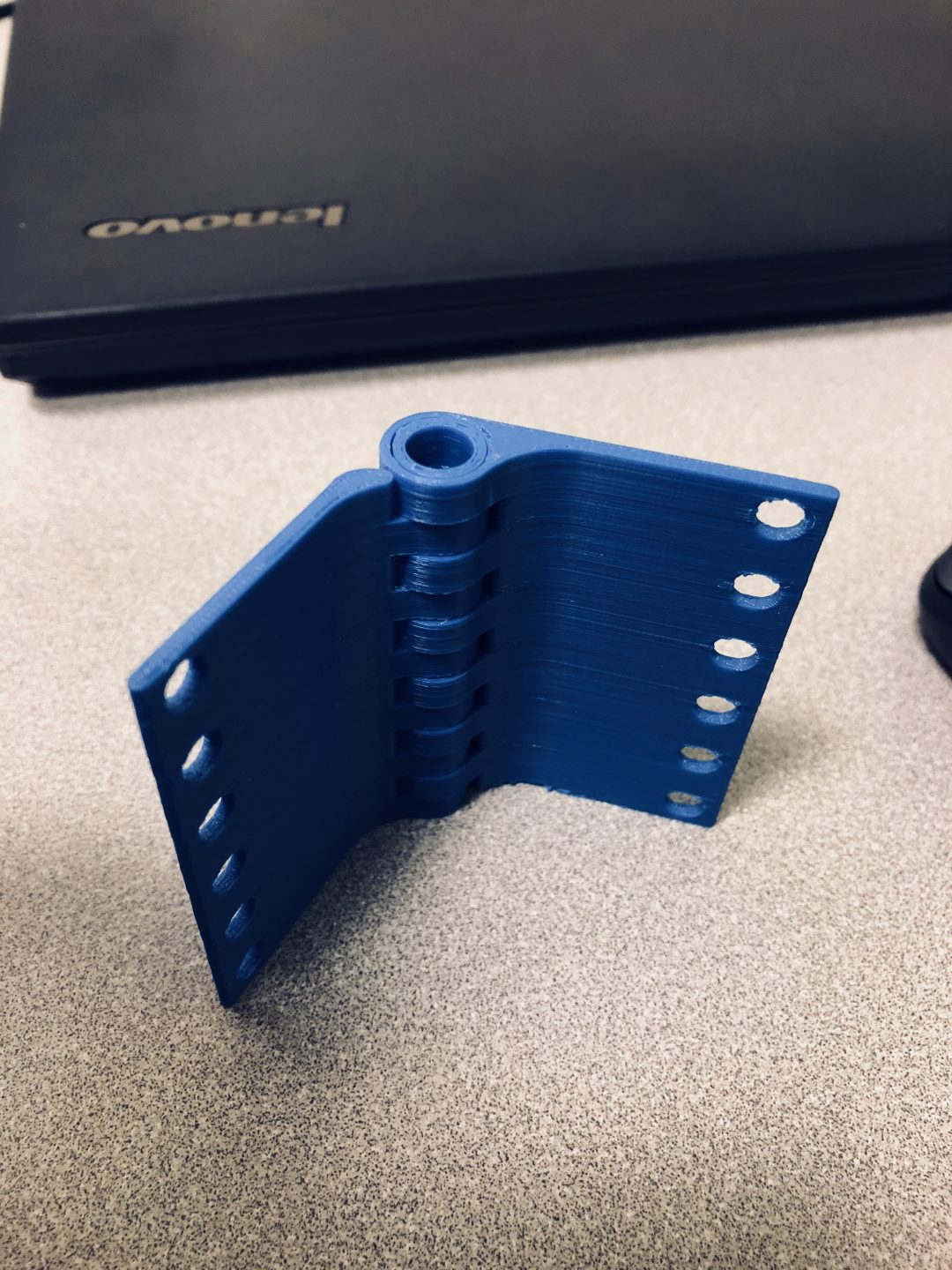In the “Einstar 3D Scanner Training Guide,” a comprehensive tutorial video provided by UMAX, viewers are guided through the process of setting up, calibrating, scanning, and editing data with the Einstar 3D scanner. The video begins with an introduction by Max, an Application engineer at UMAX, who explains that the tutorial will be a step-by-step guide covering all aspects of using the scanner. Max provides detailed instructions on unpacking the scanner, connecting it to the computer, and installing the latest software. He emphasizes the importance of calibration before each use, especially after any movement or performance issues. Different scan modes, alignment modes, and data editing techniques are explained, and Max demonstrates how to generate point clouds, create project groups, and convert them into mesh 3D models. The video also covers measurement tools and provides tips specifically for portrait mode scanning. The tutorial concludes with Max thanking viewers and wrapping up the training session. Throughout the video, Max’s calm and informative tone ensures that viewers can easily follow along and understand each step of the scanning process, making it an invaluable resource for anyone wanting to learn how to use the Einstar 3D Scanner effectively.
Setting up the Einstar 3D Scanner
Connecting the scanner to the computer
To begin using the Einstar 3D Scanner, it is necessary to connect the scanner to the computer. Start by unpacking the scanner, its cables, and the calibration board. Take the data cable and plug the round end into the scanner, ensuring that it clicks in securely. Next, connect the power adapter to the socket on the cable and plug the power cable into a power outlet. The scanner should light up, indicating that it is powered. Finally, connect the USB side of the data cable to the computer.
Installing the latest software
Once the scanner is connected to the computer, it is necessary to install the latest software. Visit the official website and download the software from the provided link. After installing the software, open the program and check if the device is recognized as online. In the top leftmost tab, the name of the product should be displayed. If the device is shown as offline, reconnect the scanner and press the circle button located under it to establish a connection.
Calibration
Importance of calibration
Calibration plays a crucial role in ensuring the accuracy and performance of the Einstar 3D Scanner. It is recommended to calibrate the scanner before each use to account for any changes in the workstation setup, as well as after moving the scanner or experiencing performance issues. Calibration allows the scanner to accurately measure the distance between the scanner and the subject, resulting in high-quality scans.
Recommended calibration before each use
Before starting a scanning project, it is essential to calibrate the scanner. To do this, place the calibration board flat in the indicated position. Hold the scanner at the specified angle for the current calibration step. Adjust the distance between the scanner and the board until all the boxes on the screen are lit up. Maintain the angle of the scanner and keep it aimed at the center throughout the calibration process. Despite initially being challenging, calibrating the scanner becomes quick and easy with practice.
Calibrating after moving the scanner
Whenever the scanner is moved or the workstation setup is changed, it is crucial to recalibrate the scanner. This ensures that the scanner can accurately measure distances and produce reliable scan data. By repeating the recommended calibration process, the scanner can adjust to the new environment and produce accurate scans.
Calibrating after experiencing performance issues
If the scanner is experiencing reduced performance or unusual behavior, it is recommended to perform a calibration. Calibration can often address issues related to tracking accuracy, alignment, and scan quality. By calibrating the scanner, potential problems can be identified and resolved, improving the overall performance and accuracy of the scans.

Find 3D Printing Accessories Here
Scan Modes
Explaining portrait mode
Portrait mode is one of the scan modes available on the Einstar 3D Scanner. It is specifically designed for scanning human subjects, capturing either portraits or the entire body. With portrait mode, users can create high-quality 3D scans of individuals for various applications, including animation, virtual reality, and medical modeling.
Recommended settings for portrait mode
When using portrait mode, certain settings should be adjusted to optimize the scan quality. It is important to consider hairstyling considerations to ensure accurate capture of the subject’s hair. Subjects with voluminous clumps of hair rather than scattered strands are more suitable for scanning in portrait mode. Additionally, avoiding facial muscle movements during scanning helps prevent deformations in the final scan.
Explaining object mode
Object mode is another scan mode available on the Einstar 3D Scanner. It is specifically designed for scanning objects of various sizes. Whether scanning small or large objects, object mode adjusts the scanner settings to enhance the field of view and tracking capabilities, making the scanning process easier and more efficient.
Recommended settings for object mode
When using object mode, several options can be adjusted to optimize the scanning process. Brightness is a crucial setting to tune for good data quality, ease of tracking, and realistic texture. Adjusting the working distance controls the distance between the scanner and the subject while scanning, ensuring optimal scanning conditions. The data quality indicator provides visual feedback on the quality of the scan, allowing users to identify areas that may require rescanning for improved quality. Texture flashing, an additional light on the scanner, is recommended to be enabled to enhance the texture capture during scanning.
Alignment Modes
Feature tracking
Feature tracking is one of the alignment modes available on the Einstar 3D Scanner. This mode uses geometric features of the subject to align and track the scanner. It is particularly useful when markers are not desired on the subject or when the subject has rich features. However, feature tracking can sometimes encounter challenges with patterned or symmetrical areas. In such cases, hybrid tracking, which combines feature tracking and marker tracking, can be recommended.
Marker tracking
Marker tracking is another alignment mode provided by the Einstar 3D Scanner. In this mode, markers are used to align and track the scanner relative to the subject. Marker tracking is advantageous when feature tracking encounters difficulties, such as in areas with patterned or symmetrical surfaces. By placing markers where feature tracking falters, users can maintain accurate alignment and tracking of the scanner.
Ensuring accurate scanning with alignment modes
To ensure accurate scanning results, it is essential to choose the appropriate alignment mode for the specific scanning project. Feature tracking is suitable for subjects with rich geometric features, while marker tracking is advantageous for areas that lack distinctive features. Hybrid tracking allows users to combine both methods, providing flexibility in alignment. Understanding the strengths and limitations of each alignment mode enables users to achieve precise and reliable scans.

Data Editing Techniques
Using selection tools
The Einstar 3D Scanner offers selection tools that allow users to manipulate and edit scan data. By holding down the shift key and dragging the mouse, users can select specific parts of the data to perform various actions. The selection tools enable users to delete selected portions, invert the selection, or create a connected domain where all connected data is selected. These selection tools provide flexibility in refining and editing scan data to meet specific requirements.
Using cutting planes
Cutting planes are a powerful tool for data editing in the Einstar 3D Scanner software. They allow users to delete any data below the plane and prevent future scanned data from appearing. Cutting planes can be created by drawing a line or selecting existing data. They offer the ability to remove unwanted portions of the scan and refine specific areas of interest. Cutting planes can be adjusted or deleted as needed, providing precise control over the editing process.
Generating point clouds
Point clouds play a significant role in refining and filtering scan data. They provide a clearer view of the scan, allowing users to make informed decisions and adjustments. After generating point clouds, users can further refine and edit the scan to achieve the desired result. Point clouds serve as a foundation for creating a mesh 3D model of the scanned object or subject. They provide valuable insights and enable users to continue working on the project.
Working with Project Groups
Aligning multiple scans
The Einstar 3D Scanner software supports the creation of project groups, which facilitate the alignment of multiple scans within the same project file. Project groups are particularly beneficial when scanning large objects or when assembling scans of objects that cannot be scanned in one piece. By aligning multiple scans, users can obtain a more comprehensive and detailed representation of the subject or object.
Using project groups for organization
Project groups also provide organizational benefits. With project groups, users can categorize and structure their scans, making it easier to manage and locate specific scans within a project. This feature enhances workflow efficiency, as users can quickly access and work with the desired scans.
Working with project files
The Einstar 3D Scanner software allows users to save and work with project files. Project files store all the necessary data, scans, and settings for a specific project. By saving projects, users can easily resume their work at a later time or share the project with others. Project files provide a convenient way to organize and store scans, ensuring the integrity and continuity of the work.
Converting Point Cloud Data to Mesh 3D Model
Understanding the process
Converting point cloud data to a mesh 3D model is a crucial step in the post-processing workflow. The point cloud data, generated from the scans, serves as the foundation for creating the mesh model. The conversion process involves optimizing the mesh for resolution, sealing gaps in the mesh, and refining the overall appearance of the model.
Options for mesh optimization
When converting point cloud data to a mesh 3D model, users have the option to optimize the mesh. Mesh optimization enhances curved areas by adding more resolution, resulting in smoother surfaces and more detailed geometry. Depending on the specific requirements and preferences, users can experiment with different mesh optimization settings to achieve the desired level of detail and quality.
Sealing gaps in the mesh model
To ensure the completeness and integrity of the mesh model, it is essential to seal any gaps in the mesh. The Einstar 3D Scanner software provides tools and options to close gaps and create a watertight mesh. However, it is important to note that larger gaps may result in a less desirable mesh structure. Users should carefully consider the size of the gaps and determine the appropriate approach to sealing them.
Measurement Tools
Using distance measurement
The Einstar 3D Scanner software offers measurement tools that enable users to accurately measure distances within the scanned model. Distance measurement provides valuable information for various applications, such as engineering, architecture, and product design. By selecting specific points or areas on the mesh model, users can obtain precise measurements, enhancing the analysis and understanding of the scanned subject or object.
Measuring surface area
Measuring the surface area of the scanned model is another useful capability provided by the Einstar 3D Scanner software. Surface area measurement allows users to quantify the surface size, enabling accurate calculations and analysis. This measurement is beneficial in fields such as industrial design, manufacturing, and quality control, where precise surface area measurements are crucial.
Calculating volume
The ability to calculate the volume of the scanned model is a valuable tool in various industries, including manufacturing, medical, and archaeology. By selecting specific areas or regions of interest, users can accurately determine the volume enclosed within the scanned model. Volume measurement provides insights into spatial characteristics and facilitates calculations and analysis.
Portrait Mode Tips
Considerations for hairstyling
When scanning human subjects in portrait mode, certain considerations should be taken into account regarding hairstyling. It is recommended to capture subjects with voluminous clumps of hair rather than scattered strands. This helps ensure accurate capture of the hair in the scan, resulting in a more realistic representation. Additionally, black hair can sometimes pose challenges, so adjustments in brightness and preparation should be made accordingly.
Avoiding facial muscle movements during scanning
To achieve optimal scan quality and avoid undesirable deformations, it is important to instruct subjects to avoid facial muscle movements during scanning. Even small facial muscle movements can introduce subtle deformations in the scan data, affecting the accuracy and realism of the final 3D model. It is best to complete the facial scanning portion quickly and then focus on scanning other areas to minimize the potential for conflicting data.
Conclusion
We hope this tutorial has provided you with a comprehensive understanding of how to use the Einstar 3D Scanner. From setting up the scanner and calibrating it to exploring different scan modes and editing techniques, you are now equipped with the knowledge and tools to create high-quality 3D scans. Remember to follow recommended calibration practices, choose the appropriate scan modes and alignment modes for your projects, and utilize the various data editing and measurement tools available. By applying these techniques and tips, you can unlock the full potential of the Einstar 3D Scanner. Thank you for watching, and we wish you success in your 3D scanning endeavors.
Maintain Your 3D Printer with these Tools








